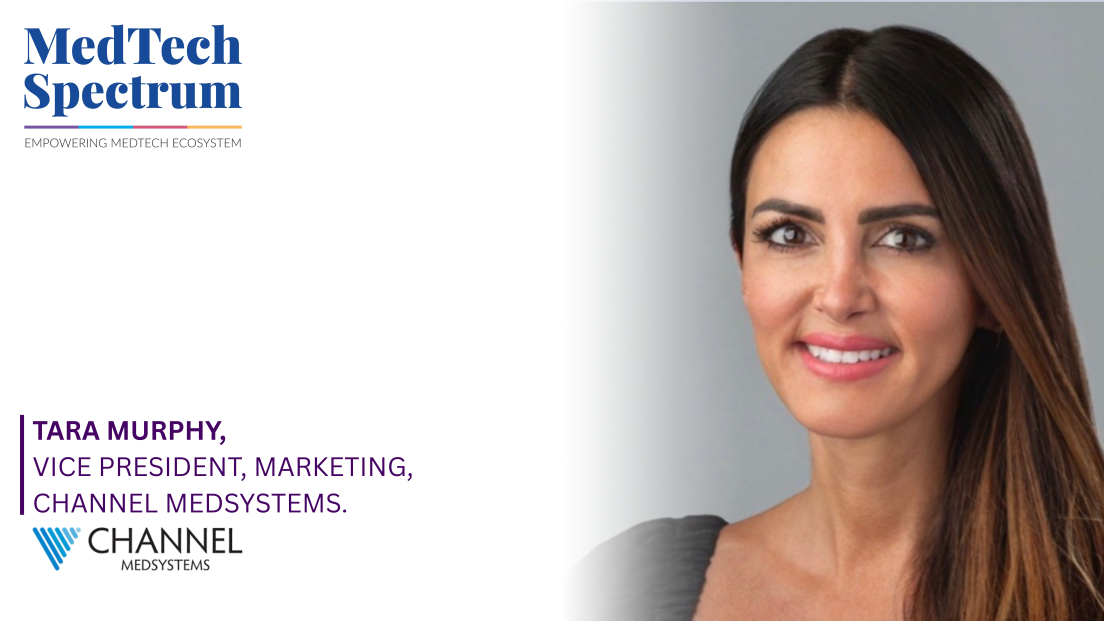
As the demand for safer, simpler, and more patient-centric gynaecologic treatments accelerates, Channel Medsystems is emerging as one of the companies reshaping the standard of care. Its flagship technology the Cerene Cryotherapy Device, has now been used to treat more than 5,000 women, a milestone that highlights growing clinical confidence and a clear shift in what patients expect from uterine-sparing procedures. Offering an incision-free, in-office alternative to traditional thermal ablation, Cerene is rapidly gaining traction among clinicians seeking predictable outcomes without the pain, scarring, or anaesthesia requirements associated with heat-based methods.
In this interview with MedTech Spectrum, Tara Murphy, Vice President of Marketing at Channel Medsystems, discusses what the 5,000-treatment milestone signifies, how cryoablation is redefining comfort and accessibility in abnormal uterine bleeding care, and why more physicians are turning to a cold-based approach. She also shares insights into adoption strategies, payer engagement, and the broader future of cryotherapy in women’s health.
Cerene has now treated over 5,000 women. What does this milestone signify?
Reaching 5,000 treatments shows a few things: 1. Women want alternative treatment options like our endometrial cryotherapy rather than what they have historically been offered with heat-based ablation 2. Our strong clinical evidence is translating into everyday practice and 3. Physicians trust the data; patients are having great outcomes. Cerene is proving that a safe, incision-free, in-office option truly meets the needs of today’s women. It’s a meaningful validation of cryotherapy as a modern standard of care.
How does Cerene’s cryoablation differ from traditional thermal ablation, and what advantages does it offer?
Unlike heat-based technologies that can scar the uterine cavity, Cerene uses controlled endometrial cryotherapy, which numbs as it treats, reducing pain and can preserve cavity access. Patients typically don’t need general anesthesia, it can be done at any site of service and clinicians get a predictable, 2.5-minute treatment with excellent visibility and future diagnostic access.
What feedback or data highlight Cerene’s ease of use and patient comfort?
In clinical studies, more than 97 per cent of women completed Cerene without IV sedation or general anesthesia. Gynecologists consistently tell us the learning curve is short, the treatment is highly predictable, and patients often say the experience was “easier than expected.” Real-world outcomes mirror our trials—bleeding reduction, high satisfaction, low pain and quick return to normal life activity.
What strategies have been most effective in expanding adoption?
Peer-to-peer education and hands-on training have been key. We partner closely with practices that are shifting appropriate procedures into the office and support them with workflow design, awareness tools, and clinical resources. A strong commercial and KOL network has accelerated adoption across both independent practices and health systems.
How is Channel Medsystems working with payers to expand insurance coverage?
Cryotherapy is already recognized within established coverage policies, and Cerene uses an existing CPT code, which helps streamline reimbursement. We support practices with documentation tools and resources to ensure patients have clear, affordable access.
Looking ahead, how do you see cryotherapy evolving in women’s health?
We’re just getting started. Our ongoing commercial expansion will continue to reinforce clinical outcomes at scale. At the same time, we’re focused on enhancing the user experience and building on endometrial cryotherapy as a standard of care for women suffering from abnormal uterine bleeding and dysmenorrhea. We see a significant opportunity for cryotherapy to play a larger role in giving women more safe, convenient, in-office options for abnormal uterine bleeding and dysmenorrhea.